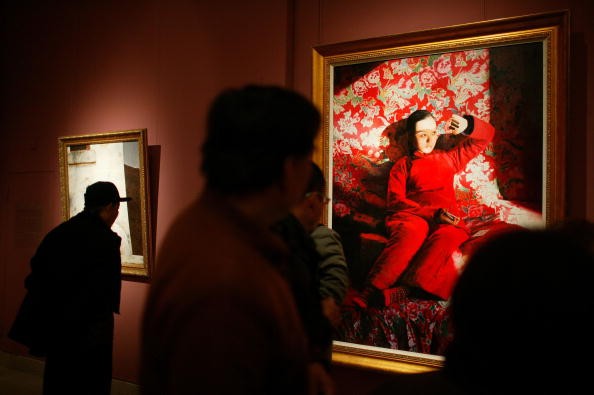China's ongoing supply-side reform has injected a much-needed dose of reality in the country's hyped-up artwork market, according to experts.
"The supply-side structural reform provides opportunities for the artwork market in China, and it leads overly high-priced products to return to rational prices. This should be the growth trend of the market," Ren Helei, a researcher at the Center for Soft Power Studies at Peking University, told China Daily in a report posted Monday.
Beijing initiated supply-side reforms in November to improve the quality of products, reallocate resources and rejuvenate the country's stalling economic growth.
However, the reforms created an unexpected effect in the China's art industry, which includes not just paintings and antiques but also ornate furniture, and old fine teas.
Several precious goods that once commanded irrationally high prices are now experiencing huge price drops as the result of dampened demand and fewer investors, China Daily said in its report.
In 2015, the Chinese art auction market posted a turnover of 50 .6 billion yuan ($7.6 billion), a drop of 20 percent from the previous year.
The volume of transactions in auctioned goods also saw a slump, according to a recent report from Beijing-based Art Market Monitor.
"The business model that relied on high growth of traditional resources and significant appreciation of art assets in a short time has ended," Ren said, adding that the local art market should look to emerging business opportunities and meet the demand for contemporary aesthetics.
Analysts forecast that, in the long term, art buyers will support the transformation and structural adjustment of China's artwork market, which is traditionally has a collection- and investment-orientation.
The market is also expected see its major growth engines shift towards art galleries, expositions, and other primary markets.
"Art consumption is expected to draw more attention, and the content and style of artwork sare likely to become more modern. The methods of creating artworks and the structure of the market should also be transformed to adapt to a brand new era," said Wu Fang, art director at Shanghai-based Huafu Art Space.
Wu Fang noted that the 2015 Shanghai Art Fair saw its total turnover reach 141 million yuan, with most of the income coming from transactions for low-cost consumer art.
Art auction houses and collection agencies have also reported a significant decline in auctions of traditional good but an increase in online art consumption, with buyers becoming increasingly younger.
As a result of continuous expansion of the auction industry in recent years, many artworks have been repeatedly sent to the auction block, leading to a serious demand-supply imbalance in auctioned goods and fewer top-level artworks available for auction.
Among the artworks that suffered the most were medium-range ordinary art with limited investment value, although several high-end products like premium tea brands have also suffered. Dayi, a top-class tea brand, saw its price drop from 2,000 yuan to 10,000 yuan per kilo.
China's rosewoods have also taken a hit. The rosewood furniture market, which was worth more than 100 billion yuan in 2012, saw prices plunge up to 30 percent, according to the China Rosewood Association.
"Consumers should consider their income levels and decide how much they should spend on artworks. Artwork consumption should be transformed from an elite consumption to a mass-based business," said Liu Shuangzhou, a professor at the law school of the Central University of Finance and Economics.
"Investors should assess the risks of investing in certain artworks and fine goods, rather than assess their value. And buyers must appraise artworks themselves. All this is consistent with the concept of supply-side reform, which emphasizes that goods should be priced cost-effectively and in line with their actual value," Liu said.



























